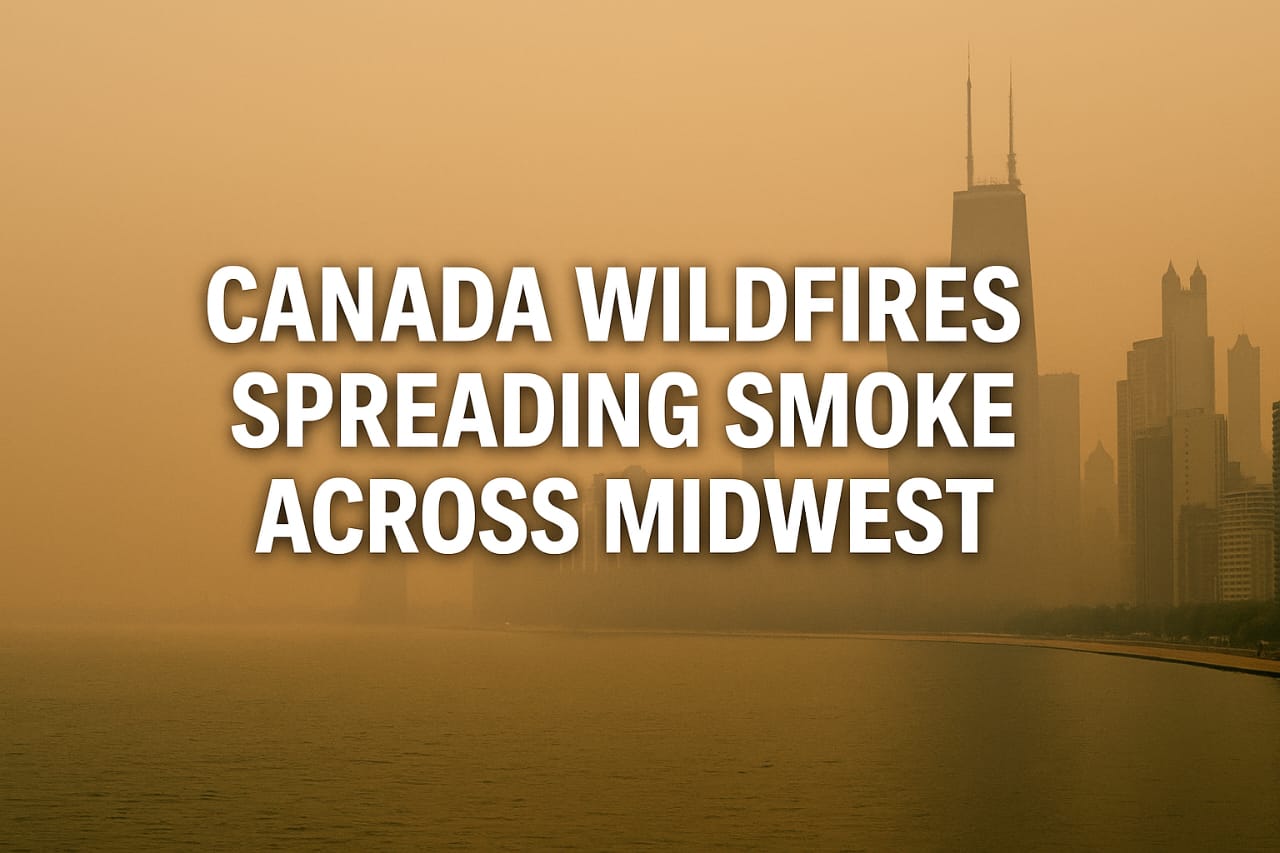Millions of people in the U.S. Midwest are facing dangerous air quality levels as thick smoke from Canadian wildfires drifts southward. If you’re in the region, here’s everything you need to know about the current situation, its health impact, and what comes next.
—
Why Is the Midwest Under an Air Quality Alert?
Massive wildfires are burning out of control across Saskatchewan and Manitoba in Canada. As upper-level winds blow from north to south, the smoke is being funneled straight into the Upper Midwest of the United States. The result? Widespread air quality alerts and health concerns for millions.
The U.S. National Weather Service has issued alerts for:
All of Wisconsin
Northern Minnesota
Michigan’s Upper Peninsula
Even Chicago is bracing for potentially poor air quality as the smoke spreads further south.
—
️ Where Could the Smoke Move Next?
According to meteorologist Chris Dolce at weather.com, near-surface smoke—the most harmful kind—will remain concentrated over the Midwest and Northern Plains throughout the weekend. Some lighter concentrations are forecast to move into the South and East, potentially affecting cities not currently under alerts.
What Is Near-Surface Smoke?
Unlike high-altitude haze that creates orange sunsets but doesn’t affect breathing much, near-surface smoke is inhaled directly, increasing risks for:
Respiratory issues
Asthma attacks
Heart conditions
Irritation in eyes, throat, and lungs
—
What You’ll Notice in the Sky
Even areas outside the direct path of thick smoke will see signs:
Hazy skies
Orange and red sunrises/sunsets
Reduced visibility
This happens when smoke particles scatter sunlight differently—a phenomenon already observed across several U.S. states.
—
️ When Will the Air Improve?
A change in weather patterns is expected Monday into Tuesday. Winds will shift and come from the south ahead of a cold front, which will help push smoke back north into Canada, offering temporary relief to parts of the U.S.
—
How to Check Air Quality Right Now
If you’re in a potentially affected area, stay informed:
1. Download/Update The Weather Channel App.
2. Tap the “Breathing” section under lifestyle options.
3. Scroll to “Today’s Biggest Impacts” for current Air Quality Index (AQI) info and health tips.
Also, try government resources like AirNow.gov for real-time updates by ZIP code.
—
Canada’s Emergency: What’s Happening North of the Border?
The wildfire crisis in Canada is escalating:
Over 80 wildfires are currently out of control.
17,000 residents in Manitoba have been forced to evacuate.
The entire town of Flin Flon, Manitoba (~5,000 residents), has been evacuated.
Saskatchewan is also experiencing severe fire conditions.
Saskatchewan Premier Scott Moe called the situation “as severe as anything we’ve seen in a very long time—if not ever.”
Canada’s wildfire season typically runs from May through September, but this year’s fires are some of the most intense on record. In 2023, North America saw its worst wildfire season ever, with smoke blanketing cities thousands of miles from the flames.
—
易 Health Tips for Dealing With Wildfire Smoke
If you live in an affected area:
Stay indoors as much as possible.
Use HEPA air filters or run your HVAC system on recirculate.
Wear N95 masks if you must go outside.
Avoid outdoor exercise.
Keep windows and doors tightly shut.
Special care should be taken for:
Children
Elderly people
Pregnant women
Individuals with heart/lung issues
—
里 Extra Insights: Why Wildfire Smoke Is So Dangerous
Wildfire smoke contains fine particulate matter (PM2.5), which is about 30 times smaller than the width of a human hair. These tiny particles can:
Enter deep into your lungs
Bypass the body’s natural defense systems
Trigger inflammation and worsen existing health problems
Long-term exposure to PM2.5 is also linked to:
Increased risk of heart disease
Stroke
Lung cancer
—
✅ Summary
Wildfires in Canada are creating dangerous air quality across the Midwest.
The smoke may extend into the South and East in lighter concentrations.
A weather shift early next week may bring temporary relief.
Stay updated via weather apps, AirNow, and official local advisories.
